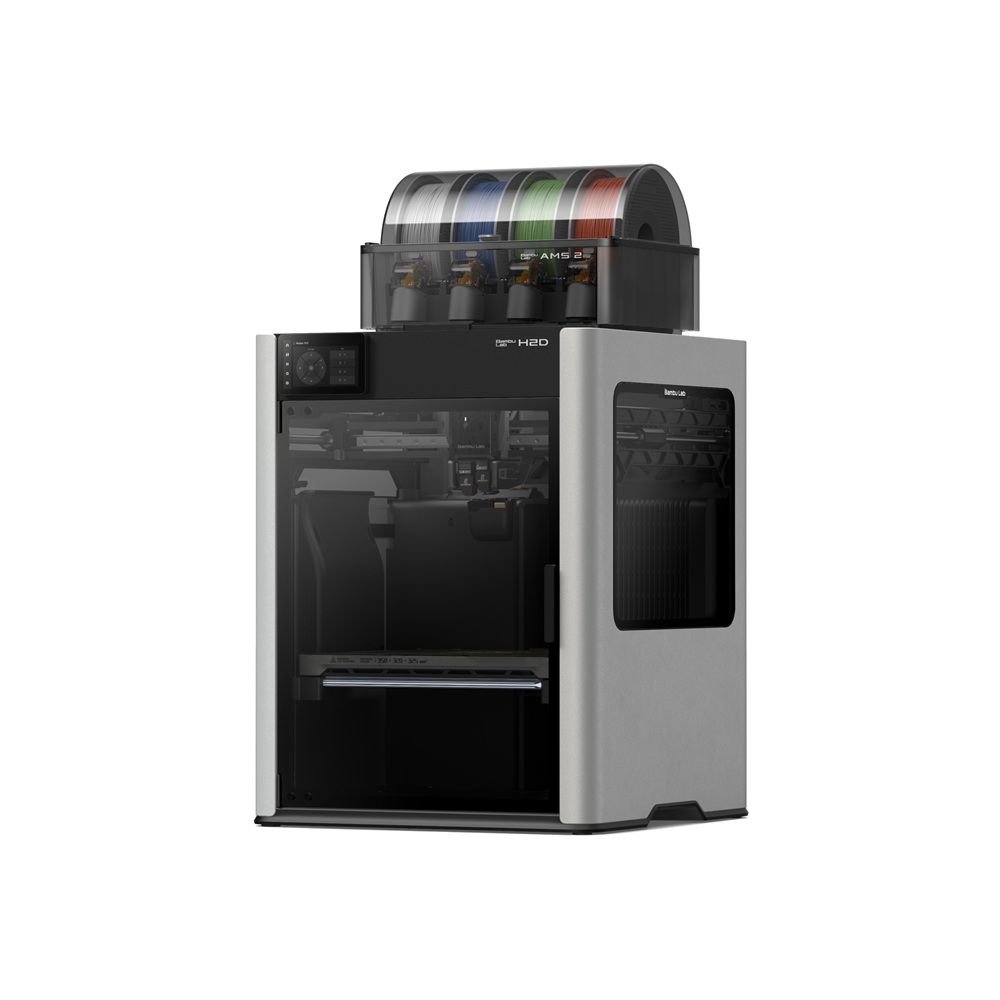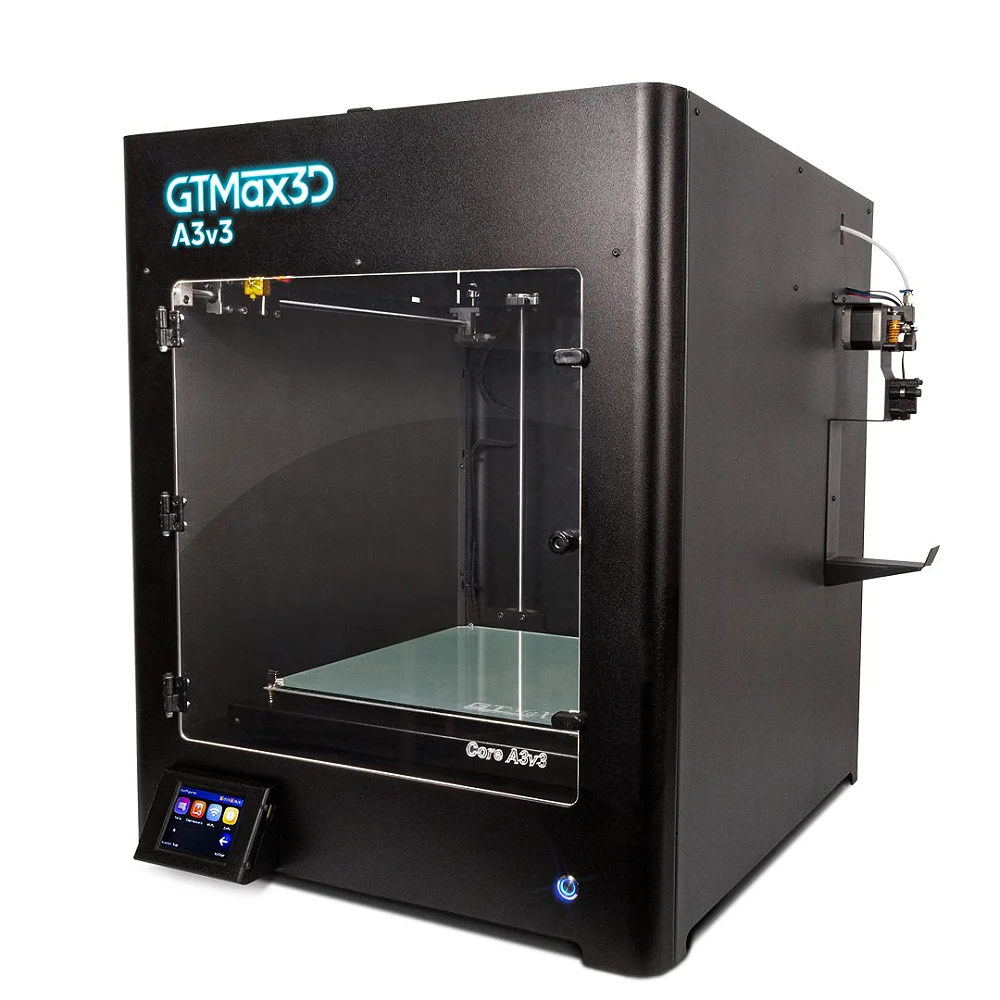Compare H2D vs A3V3
Comparison between the best 3D printers
Choose the best 3D printer at the best price. The cheapest 3D printers are here.
Buy a 3D printer here with 3D Fila.
 |
 |
|
| Model | H2D |
A3V3 |
| Printing Material | Filament | Filament |
| Buy Filament for Bambu Lab H2D | Buy Filament forGTMax A3V3 | |
| Estimated price | $1899,00 | $1210,00 |
| Manufacturer | Bambu Lab | GTMax |
| Release Year | 2025 | 2022 |
| Print Volume [mm] | 350x320x325 | 320x320x340 |
| Printer Size [mm] | 492x514x626 | 640x580x630 |
| Weight [kg] | 42,3 | |
| Power Loss Recovery | YES | YES |
| Enclosed printer | YES | YES |
| Bed Leveling | Automatic | Automatic |
| Filament End Sensor | YES | YES |
| Bed type | Heated | Heated |
| Power supply system | Direct Drive | Bowden |
| Standard nozzle | 0,4 | 0,4 |
| Maximum Nozzle Temperature [°C] | 350 | 295 |
| Maximum Bed Temperature [°C] | 120 | |
| Maximum printing speed [mm/s] | 600 | 180 |
| Filament holder | YES | YES |
| Camera for supervision | YES | YES |
| Recommended filaments | PLA, PETG, ABS, ASA, TPU, PVA, Nylon (PA) | PLA, PETG |
| Recommended slicers | Bambu Studio | Cura, Simplify, Slic3r, IdeaMaker e outros |
| Maximum Resolution [mm] | 0,01 | 0,05 |
| Processor | ||
| Display | Touchscreen 5'' | Display touchscreen 3,2'' |
| Power Supply | ||
| Connectivity | Wifi, Bambu bus, Cartão SD | SD / USB / Wi-Fi |
| Operating systems | Windows, Mac, Linux | Windows, Mac, Linux |
| Date of registration in the system | 2025-03-31 | 2022-11-12 |
| Release date | 2025 | 2022 |
| Extra features | Bambu Labs H2D combines high-speed 3D printing with a chamber heated up to 65 °C, dual extrusion with automatic nozzle switching, an AMS for filament drying and exchange, and AI sensors that detect failures. It offers optional laser and digital cutting capabilities, features intelligent calibration through computer vision, vibration control, enhanced fire safety, and real-time camera monitoring. | The PROCORE A3v3 is an advanced 3D printer with a robust structure and Wi-Fi connectivity. It stands out for its aluminum extruder with Dual Gear system for precision and traction, and a movement system with machined parts. It includes a 3.2-inch LCD Touchscreen Display, Wi-Fi remote control and a Core XY movement system for greater speed and precision. It offers an Allmetal Volcano hotend that reaches up to 295°C, is compatible with various filaments and has an energy saving system, reducing consumption by up to 75%. |
| Support for multiple colors and materials (AMS and CFS) | YES | NO |
Notes * |
||
| Cost-benefit | 7 / 10 | 6 / 10 |
| Hardware | 8 / 10 | 3.5 / 10 |
| Tela | . | . |
| Print volume | 4 / 10 | 4 / 10 |
| Performance | 5 / 10 | 1 / 10 |
Conclusion |
| In conclusion, when comparing the Bambu Lab H2D and the GTMax A3V3 3D printers, several key differences and features stand out that can guide a purchasing decision. The H2D, while more expensive, offers advanced capabilities such as higher maximum nozzle and bed temperatures, significantly faster printing speeds, and compatibility with an extensive range of filaments, including specialized materials. Its built-in features for failure detection, dual extrusion with automatic nozzle switching, and options for laser cutting set it apart in terms of technology and versatility. The sophisticated design, including a spacious print volume and a touchscreen interface, enhances user experience and operational efficiency. On the other hand, the A3V3, although more affordable, provides solid performance with reliable specifications for entry to mid-level users. Its Core XY movement system and aluminum dual gear extruder contribute to decent print quality and precision, but it lacks some of the advanced features and speed that the H2D boasts. Its lower cost might appeal to hobbyists or those entering the 3D printing space. In summary, if budget allows and advanced features are a priority, the Bambu Lab H2D proves to be a robust choice, particularly for users looking for high-performance printing. Conversely, the GTMax A3V3 serves as a commendable alternative for those seeking a reliable printer at a lower price point, suitable for basic projects without the need for extensive high-end functions. Ultimately, the choice depends on specific needs, desired output, and budget considerations. |

